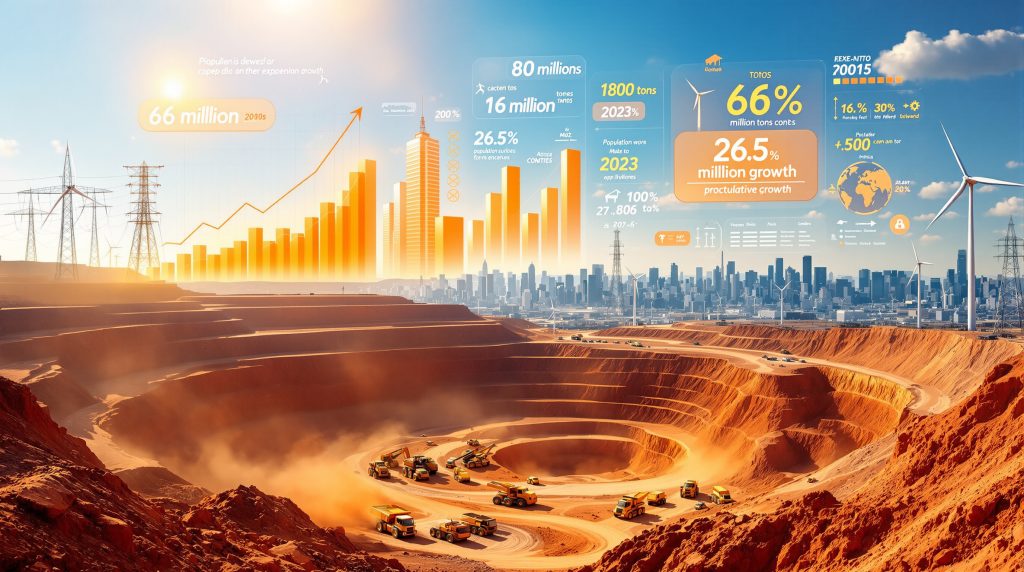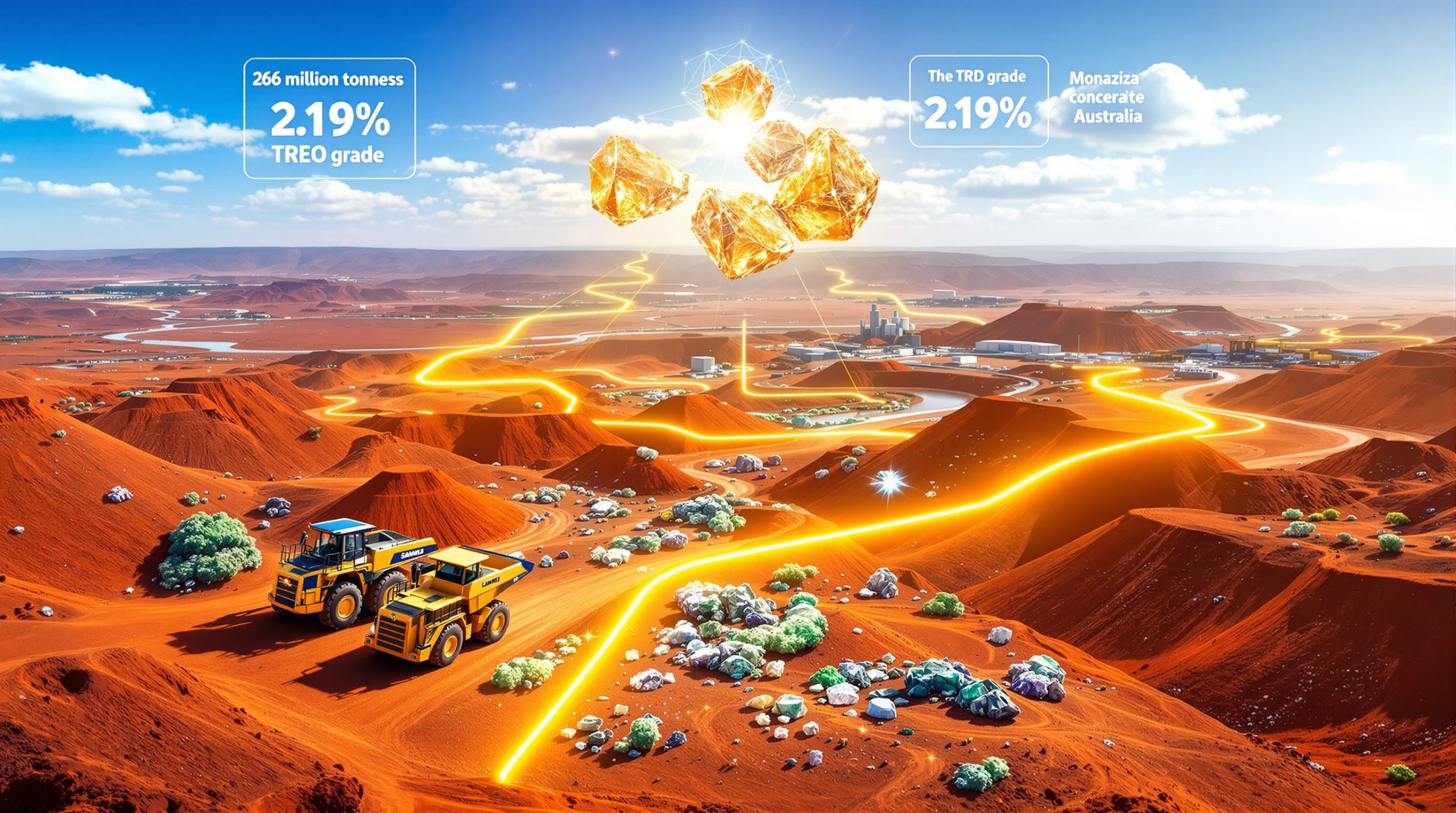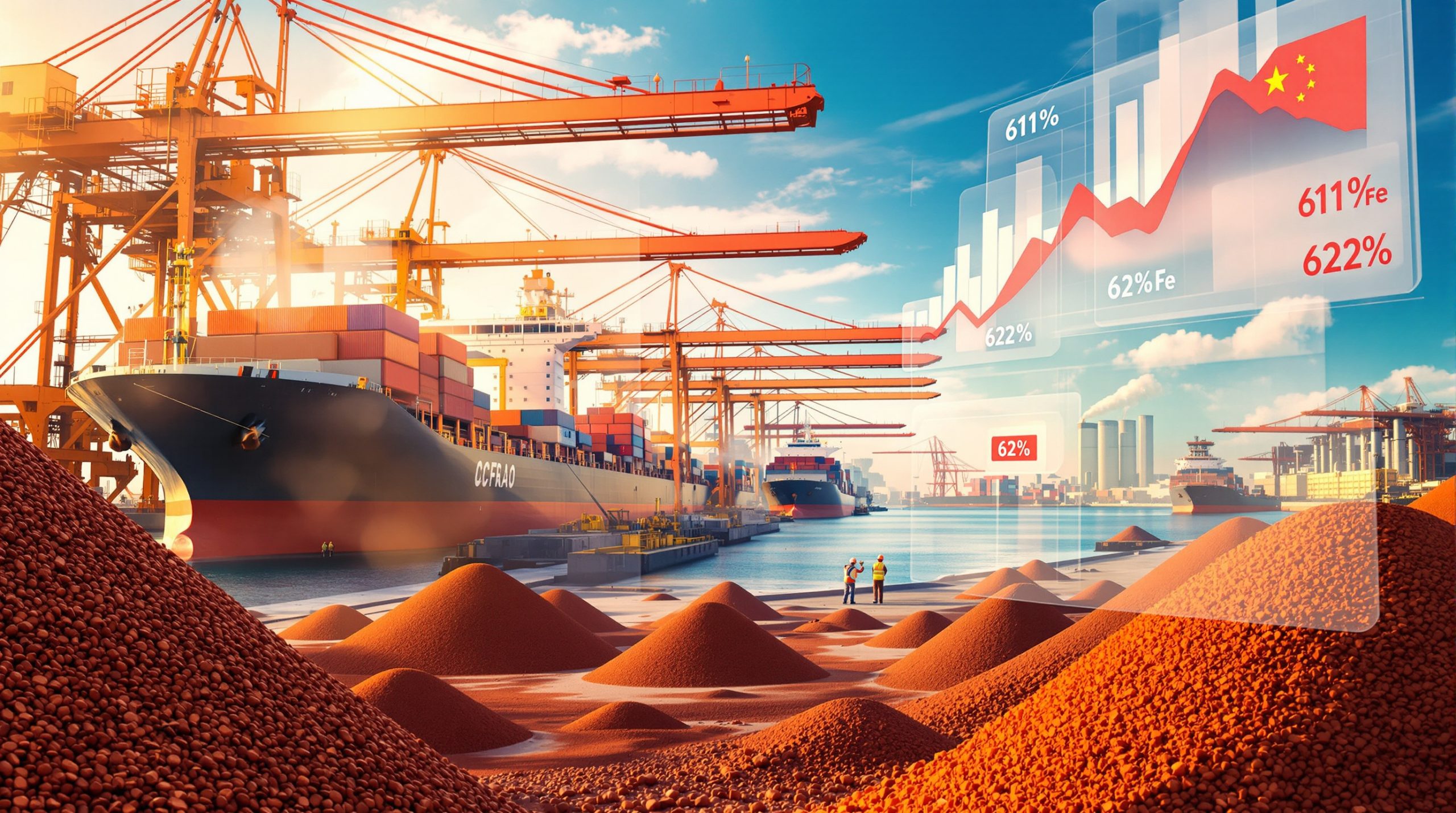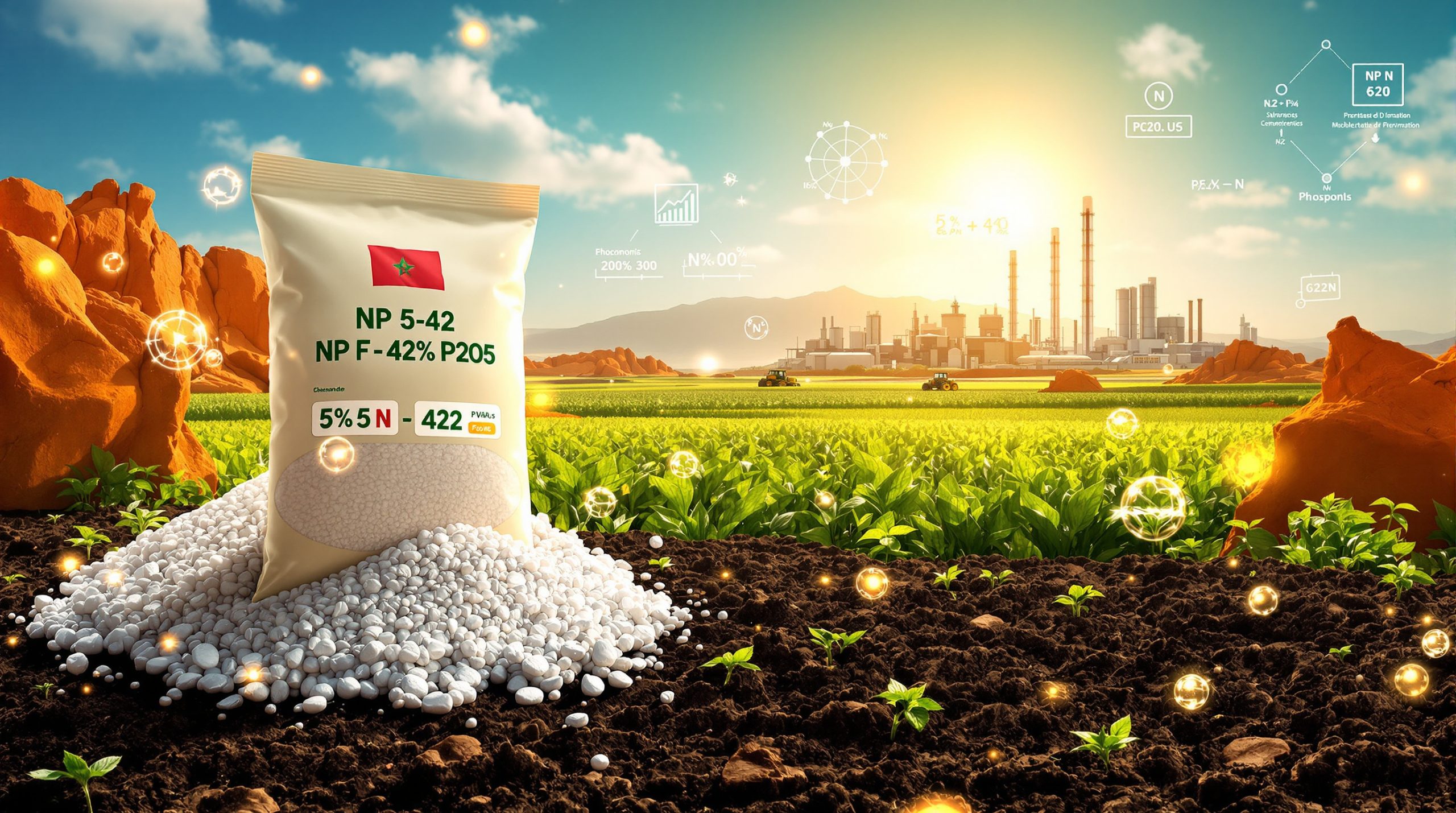Understanding the Fundamental Connection Between Demographics and Metal Demand
The relationship between human population expansion and copper extraction represents one of the most predictable patterns in industrial economics. As societies grow and develop, their appetite for this versatile metal increases exponentially, creating sustained pressure on global mining operations.
Population growth serves as the primary driver for copper-intensive infrastructure development across emerging economies. Each additional person requires electrical connections, telecommunications access, and modern amenities that depend heavily on copper's unique properties. These properties include electrical conductivity of 59.6 × 10^6 siemens per meter, superior thermal conductivity, and exceptional corrosion resistance that make copper irreplaceable in most applications.
The United Nations projects global population will reach 9.7 billion by 2050, with most growth concentrated in regions currently lacking modern infrastructure. This demographic shift creates substantial copper production and population growth pressures as developing nations simultaneously expand their populations and modernise their technological capabilities.
What Historical Patterns Reveal About Copper Consumption Trends?
The Century-Long Mining Evolution
Global copper extraction has undergone remarkable transformation over the past century. According to USGS historical statistics, mine production has expanded approximately 130-fold since 1900, when global output measured roughly 195,000 metric tons annually. This dramatic increase far exceeds simple population growth, indicating fundamental changes in per-capita copper requirements.
Key Production Milestones:
• 1900: Approximately 195,000 metric tons globally
• 2010: 15.9 million metric tons (USGS confirmed data)
• 2023: 21.1 million metric tons mine production, 26.5 million metric tons refined copper
• 2024: Estimated 23 million metric tons mine production
The mining industry evolved through distinct technological phases. Early placer mining operations before 1900 extracted copper from surface deposits and streams. Underground mining dominated from 1900-1950, followed by the open-pit mining era through 2000. Modern integrated operations now combine extraction, processing, and recycling capabilities to maximise efficiency, with many companies implementing copper mining advancements to improve extraction rates.
Population-Driven Infrastructure Requirements
Each additional billion people creates predictable copper demand patterns. Historical analysis of urbanisation projects demonstrates that modern cities require extensive electrical grids, telecommunications networks, and transportation systems. The Bingham Canyon Mine in Utah exemplifies this evolution, transitioning from underground operations in 1863 to open-pit mining in 1906, continuing production today as demand patterns shifted.
Regional production centres have also shifted dramatically. Chile now produces 26-28% of global copper, while traditional producers like the Philippines experienced 85% production decline from 2010-2023 due to resource depletion and regulatory challenges. Furthermore, these shifts directly impact global copper supply forecast projections for the coming years.
Why Has Copper Demand Per Capita Accelerated Since the 1990s?
The Digital Revolution's Metal Requirements
The mid-1990s marked a pivotal shift in copper consumption patterns. Unlike earlier decades where demand grew proportionally with population, technological advancement began driving higher per-capita consumption. Personal computer shipments increased from 11.2 million units in 1990 to 135 million units by 2000, according to IDC market data.
Internet infrastructure development created unprecedented copper requirements. Global internet users grew from 40 million in 1995 to 304 million by 2000, necessitating extensive telecommunications infrastructure. Each component of this digital expansion required significant copper content:
• Personal computers: 1-2 kg copper per unit in internal wiring and circuit boards
• Telecommunications switching equipment: Substantial copper requirements for network connectivity
• Data centre facilities: Extensive copper wiring for power distribution and cooling systems
• Mobile network infrastructure: Base stations and antenna systems requiring copper components
Emerging Market Industrialisation Impact
China's urbanisation alone generated massive infrastructure projects requiring millions of tons of copper for construction and electrical systems. The country's copper consumption grew from 1.2 million metric tons in 1990 to 3.4 million metric tons by 2000, reflecting rapid industrial development and urban population growth from 26% to 36% during this period.
This pattern established a new consumption model where copper production and population growth correlation shifted from simple demographic expansion to technology-intensive development. Each new urban resident now requires significantly more copper than historical patterns suggested due to digital connectivity requirements and modern living standards.
How Do Modern Supply Constraints Affect Future Production?
Declining Ore Quality Challenges
Mining operations now process dramatically larger volumes of ore to extract equivalent copper quantities compared to previous generations, fundamentally altering production economics and environmental impact.
International Copper Study Group data reveals that average copper ore grades globally have declined from approximately 2.5% copper content in the 1960s to approximately 0.7% copper content in the 2020s. This represents a 71% reduction in ore quality over six decades, requiring mining companies to process 143 tons of ore to produce one ton of copper, generating 99.3% waste rock.
Supply-Side Pressures:
• Processing volume increases: 4x more ore processing required than 1960s operations
• Energy consumption escalation: Proportional increases in electricity requirements per ton of copper
• Environmental footprint expansion: Larger waste rock generation and water consumption
• Capital requirement inflation: Higher investment needed for equivalent production capacity
Geographic Distribution of Resources
Major copper-producing regions face distinct challenges in meeting growing demand:
| Region | Production Challenges | Future Outlook |
|---|---|---|
| South America | Water scarcity in Atacama, political instability in Peru | Moderate growth potential |
| North America | Environmental regulations adding 3-7 years to development | Stable but limited expansion |
| Africa | Infrastructure limitations adding $50-200M to project costs | High resource potential |
| Asia-Pacific | Resource depletion, Philippines production declined 85% | Declining regional output |
Regulatory approval processes now extend mine development timelines from 7-10 years in the 1990s to 15-20 years currently, according to International Council on Mining and Metals data. Environmental impact assessments require 2-5 years, indigenous consultation processes add 1-3 years, and permitting procedures consume another 2-5 years before construction begins.
What Role Does Population Growth Play in Future Copper Demand?
Developing Nation Infrastructure Needs
Emerging economies with rapidly growing populations require massive copper investments to achieve modern living standards. The International Energy Agency reports that 775 million people in sub-Saharan Africa lack electricity access, necessitating grid expansion requiring millions of tons of copper for transmission and distribution infrastructure.
India presents a compelling case study for infrastructure-driven copper demand. The World Bank projects India requires $1.4 trillion in infrastructure investment through 2030, with energy sector modernisation representing a significant component. UN population projections indicate India's population will reach 1.7 billion by 2050, primarily concentrated in urban areas requiring extensive infrastructure development.
Regional Infrastructure Requirements:
• Urban electrical grid density: 50-100 km of wiring per square kilometre
• Rural electrical grid density: 5-15 km of wiring per square kilometre
• Public transportation electrification: 50-80 kg copper per electric bus
• Railway electrification: 500-1000 kg copper per track mile
Urbanisation's Copper Intensity
Each new city dweller requires significantly more copper than rural populations due to infrastructure concentration. Urban infrastructure copper requirements include:
Electrical Distribution Systems:
• Residential connections: 15-20 kg copper per household
• Commercial buildings: 100-300 kg per structure
• Institutional facilities: 200-500 kg per building
• Transformer infrastructure: 50-100 kg per 100 households
Kenya's Last Mile Connectivity project exemplifies this urbanisation impact. The initiative aimed to connect 5 million households, requiring approximately 500,000 tons of copper in wiring infrastructure according to Kenya Power Company documentation.
How Does the Energy Transition Amplify Copper Requirements?
Renewable Energy's Metal Appetite
Green energy technologies require substantially more copper than traditional fossil fuel systems. The IVL Swedish Environmental Research Institute confirms that renewable energy installations demonstrate significantly higher copper intensity per megawatt of generating capacity, contributing to surging copper demand across global markets.
Copper Requirements by Technology:
• Wind turbines: 3-5 tons per megawatt installed capacity
• Solar photovoltaic systems: 4-5 tons per megawatt
• Electric vehicles: 83kg per vehicle compared to 23kg for conventional cars
• Charging infrastructure: Extensive copper wiring networks for power distribution
Electric vehicle adoption creates multiplicative copper demand. Each electric vehicle contains approximately 83 kg of copper in motors, batteries, and wiring systems. Additionally, charging infrastructure requires substantial copper investment in electrical distribution networks, transformers, and charging station components.
Grid Modernisation Demands
Transitioning to renewable energy sources necessitates comprehensive electrical grid upgrades, creating additional copper demand beyond basic population growth requirements. Smart grid technologies, energy storage systems, and distributed generation networks all require copper-intensive infrastructure modifications.
Modern power grids must accommodate bidirectional electricity flows, variable renewable generation, and real-time demand management. These capabilities require advanced switching equipment, monitoring systems, and transmission infrastructure with substantial copper requirements. However, industry experts are developing copper supply crunch strategies to address these mounting pressures.
What Supply-Demand Imbalances Are Emerging?
Production Peak Projections
Industry analysts project potential copper mining peaks between 2030-2045, creating significant supply-demand tensions as global population continues expanding. Current production trajectories appear insufficient to meet projected requirements under various development scenarios.
Demand vs. Supply Scenarios:
• Business-as-usual development: Substantial shortfalls projected by 2040
• Green energy transition pathway: Potential supply deficits exceeding 20 million tons annually
• Current production trajectory: Insufficient capacity for either scenario
The International Copper Study Group indicates that even with recycling contributing approximately 35% of current supply, primary mining production must increase significantly to meet projected demand. However, declining ore grades and extended development timelines constrain new mine development.
Investment and Innovation Requirements
Bridging the supply gap requires substantial technological advancement and capital investment:
Technology Solutions:
• Advanced extraction methods for lower-grade deposits
• Improved ore processing efficiency to reduce waste
• Enhanced recycling technologies to increase secondary supply
• Alternative material development for specific applications
Capital Requirements:
• New mine development: $2-8 billion per major project
• Processing facility modernisation: $500M-2B per operation
• Research and development: Increased investment in extraction innovation
How Can Mining Efficiency Address Growing Demand?
Technological Solutions
Modern mining operations employ sophisticated technologies to maximise copper recovery from increasingly challenging ore bodies. Automation systems enable precise extraction from deeper, lower-grade deposits while maintaining economic viability.
Advanced Mining Technologies:
• Automated extraction systems reducing human safety risks
• Precision drilling and blasting optimising ore recovery
• Real-time resource monitoring improving operational efficiency
• Advanced ore processing techniques increasing copper recovery rates
Recycling's Growing Importance
Secondary copper production from recycling now represents approximately 35% of global supply, offering partial relief from primary mining pressure. Copper's exceptional recycling properties allow indefinite reuse without quality degradation, making recycled copper equivalent to newly mined material.
Recycling Advantages:
• Energy efficiency: 85% less energy required than primary production
• Resource conservation: Reduces pressure on new mine development
• Economic benefits: Lower processing costs for recycled material
• Environmental impact: Significantly reduced mining footprint
However, recycling alone cannot address the growing demand gap. Urban mining initiatives and improved collection systems can increase recycling rates, but primary production expansion remains essential for meeting copper production and population growth requirements.
What Economic Implications Follow Population-Driven Copper Demand?
Price Volatility Patterns
Historical data demonstrates strong correlations between population growth phases and copper price cycles. Sustained demand growth typically supports higher long-term pricing, with periodic volatility reflecting supply disruptions, economic cycles, and geopolitical factors.
Copper's price sensitivity to economic development makes it an effective indicator of global economic health. The metal's dual role as industrial commodity and population-driven infrastructure material creates complex pricing dynamics reflecting both cyclical and structural demand factors. Moreover, expert analysis provides valuable copper price insights for understanding future market trends.
Investment Opportunities and Risks
Growing copper demand creates opportunities across multiple sectors:
Investment Categories:
• Mining company equities with exposure to high-quality deposits
• Technology development funding for extraction innovation
• Infrastructure project financing in developing markets
• Commodity trading strategies based on supply-demand fundamentals
Risk Considerations:
• Regulatory changes affecting mining operations
• Environmental compliance costs increasing project economics
• Geopolitical factors influencing major producing regions
• Technology disruption potentially altering demand patterns
Investors must consider long development timelines, substantial capital requirements, and operational complexity when evaluating copper mining investments. However, the fundamental relationship between population growth and copper demand provides underlying support for long-term investment themes.
Navigating the Population-Copper Growth Dynamic
The relationship between global population expansion and copper production represents a fundamental economic driver that will continue shaping mining industry development for decades. As approximately 67 million people are added to global population annually, each requiring copper-intensive infrastructure and technology, mining operations must evolve to meet this sustained demand while addressing environmental and resource constraints.
Disclaimer: This analysis includes forward-looking projections based on current demographic and economic trends. Actual copper demand and production outcomes may vary due to technological developments, regulatory changes, economic conditions, and other factors. Investment decisions should consider comprehensive risk assessments and professional financial advice.
Understanding the demographic-industrial connection between copper production and population growth provides crucial insights for investors, policymakers, and industry professionals navigating the complex landscape of global resource management. The accelerating digitalisation of society, combined with the energy transition and urbanisation in developing economies, creates unprecedented demand for this essential metal.
Future copper supply adequacy depends on continued technological innovation, expanded recycling capabilities, and successful development of new mining projects despite increasing operational challenges. The industry must balance meeting growing human needs with environmental stewardship and sustainable resource management practices.
Ready to Capitalise on the Next Major Copper Discovery?
Discovery Alert instantly notifies investors of significant ASX mineral discoveries using its proprietary Discovery IQ model, transforming complex mining announcements into actionable investment insights. Begin your 30-day free trial today and gain access to the same technology that has identified major copper discoveries, positioning yourself ahead of the market as global copper demand continues its unprecedented surge.




